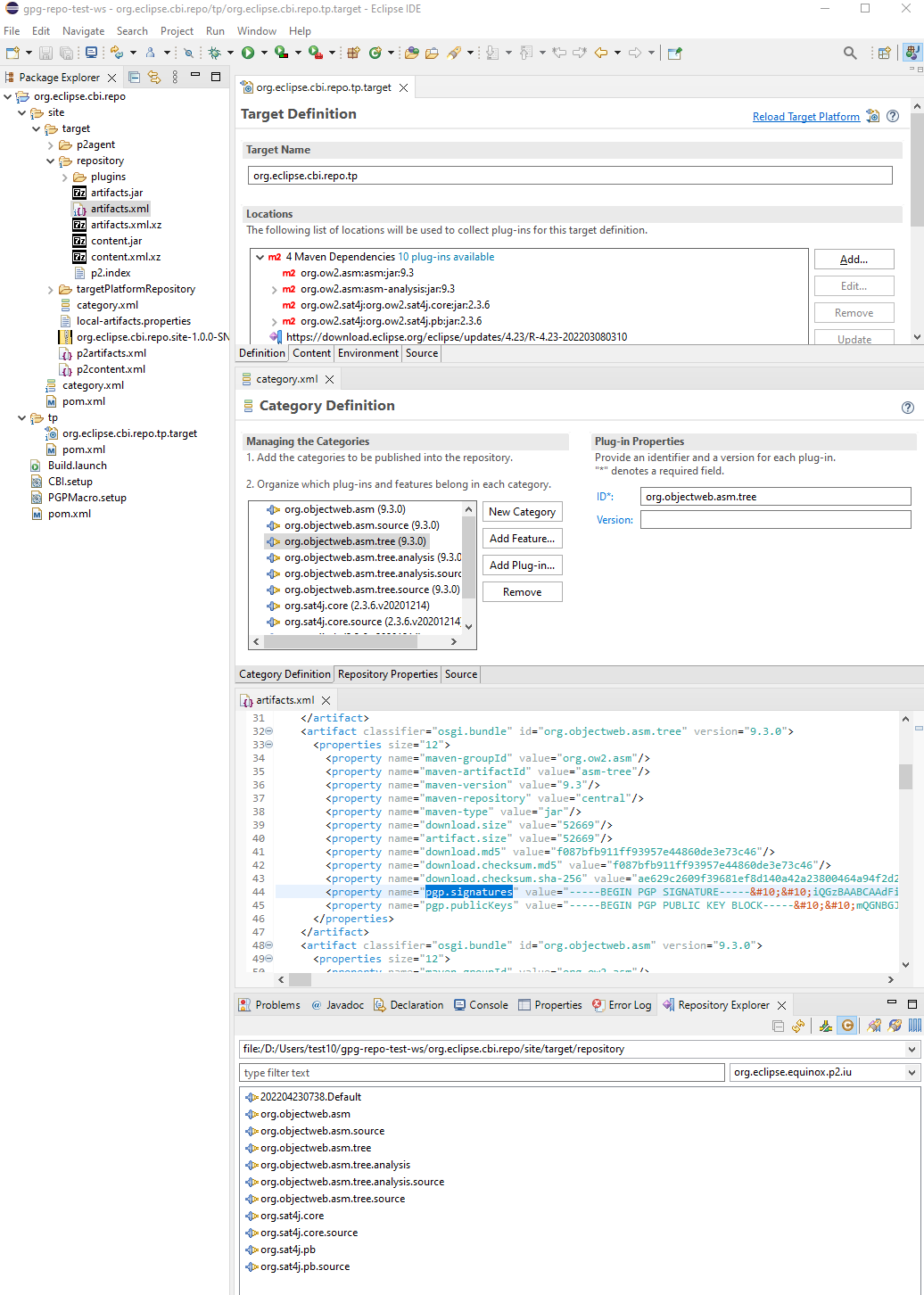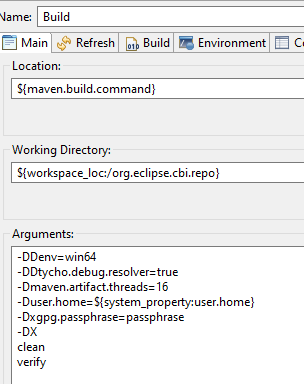[
Date Prev][
Date Next][
Thread Prev][
Thread Next][
Date Index][
Thread Index]
[
List Home]
|
Re: [eclipse-ide-wg] Minutes of May 3rd Eclipse IDE WG Steering Committee Meeting
|
Mickael,
This document would have been very helpful to me previously! I
like it!!
I would suggest that there should be a better place to find out
specifically about m2e's PDE integration than in the release notes
because when I start at https://www.eclipse.org/m2e/ and even when
I get to
https://www.eclipse.org/m2e/documentation/m2e-documentation.html
there is very little user-focused documentation. E.g., when I hit
this wizard I was wondering where can I find out about the
multitude of choices and options in this dialog (and the ? button
does nothing):
https://user-images.githubusercontent.com/1331477/139412713-e0218ff7-642c-4c19-afac-55fca49ef325.png
I guess Tycho doesn't really have a project site beyond this one
https://projects.eclipse.org/projects/technology.tycho
The website link links to here:
https://www.eclipse.org/tycho/sitedocs/
That documentation is good and I use it a lot. It would be good
to be able to discover this additional documentation later
starting from your project's portal site or whatever you consider
the main user-facing entry point. It would be good to post some
type of article to attract people's attention to the new
possibilities! Let's just just not let it get lost over time...
Previously I've been working on a sample like the one below where
I investigated all the parts involved. I.e., a *.target file
using m2e (just like what's in the Platform SDK's *.target), a
category.xml for building an update site, and all the pom.xml
files needed for this.

I experimented locally with generating a PGP key and I can run
this build locally to produce an update site (as seen loaded in
the Repo Explore) with PGP signed content (as seen in the
artifacts.xml).
The build can run like this:

I always run these types of things in a "fake" user home so that
I can run this in isolation of my real user home (to be able to
create a from-scratch user experience and to be able to delete it
all). So I wrote a script like this (for Windows) to help set up
and test the various things needed to have a local PGP key that
can be used for signing:
#!/bin/sh
#
# Use the following to your use home to be the current
directory.
# . user-home
#
# https://maven.apache.org/plugins/maven-gpg-plugin/usage.html
#
https://maven.apache.org/plugins/maven-gpg-plugin/sign-mojo.html
#
https://www.eclipse.org/tycho/sitedocs/tycho-gpg-plugin/sign-p2-artifacts-mojo.html
#
https://blog.sonatype.com/2010/01/how-to-generate-pgp-signatures-with-maven/
# https://www.gnupg.org/gph/en/manual/x135.html
DRIVE=$(echo "$PWD" | cut -d "/" -f2)
DIRECTORY=$(realpath --relative-to=/$DRIVE $PWD)
NAME=$(basename $PWD)
echo "DRIVE='$DRIVE'"
echo "DIRECTORY='$DIRECTORY'"
echo "NAME='$NAME'"
export
APPDATA="${DRIVE^}:\\${DIRECTORY/\//\\}\\AppData\\Roaming"
export HOME="$PWD"
export HOMEPATH="\\${DIRECTORY/\//\\}"
export HOMEDRIVE="${DRIVE^}:"
export
LOCALAPPDATA="${DRIVE^}:\\${DIRECTORY/\//\\}\\AppData\\Local"
export USERNAME="${NAME}"
export USERPROFILE="${DRIVE^}:\\${DIRECTORY/\//\\}"
export
echo ""
echo "gpgconf"
gpgconf --list-dirs
echo ""
echo "agent?"
ps -s | grep gpg-agent
echo 'If there is a running agent, you may need to kill -9
<pid> it to use this this new user home."
echo ""
echo "keys"
gpg --list-keys
echo 'If no keys are listed, using $gpg --generate-key to
generate one'
echo 'The keyname is the list 8 digits of the keys listed
above.'
echo 'The value gpg --list-keys <keyname> should list the
same details for pgp signing in Maven/Tycho to work.'
This really helped me understand how the whole end-to-end process
works. It's especially cool that one can produce such a
PGP-signed update site locally!
Somehow I need to find time to turn this into useful/reusable
documentation...
On 19.05.2022 02:38, Mickael Istria
wrote:
Hello,
On the topic of
> Create a sample that shows how to create a p2
repository from maven dependencies to understand how this
process works
So if the IDE working group has some recommendation of
where is the best place to host it so it gets enough attention
from the community, that would be welcome. In the end, what
seemd more important than where it's hosted is to share this
with cross-project-issues-dev mailing-list, but where to host
can also matter so let's discuss that. Some ideas are 1. my
personal and outdated blog, 2. Red Hat Developers blog (need
to check with them if they'd like to host this very specific
content), 3. Eclipse Newsletter, but it's usually crowded with
other informations and focused on particular topics so we may
face a delay, 4. keep it as a Google Doc and share it as it,
5. Make it a .md file somwhere on Tycho repo.... I really
don't have any preference as all them have more or less
equivalent benfits&drawbacks so none seems really better.
What do you think?
Cheers,
Mickael
_______________________________________________
eclipse-ide-wg mailing list
eclipse-ide-wg@xxxxxxxxxxx
To change your delivery options, retrieve your password, or unsubscribe from this list, visit
https://www.eclipse.org/mailman/listinfo/eclipse-ide-wg


